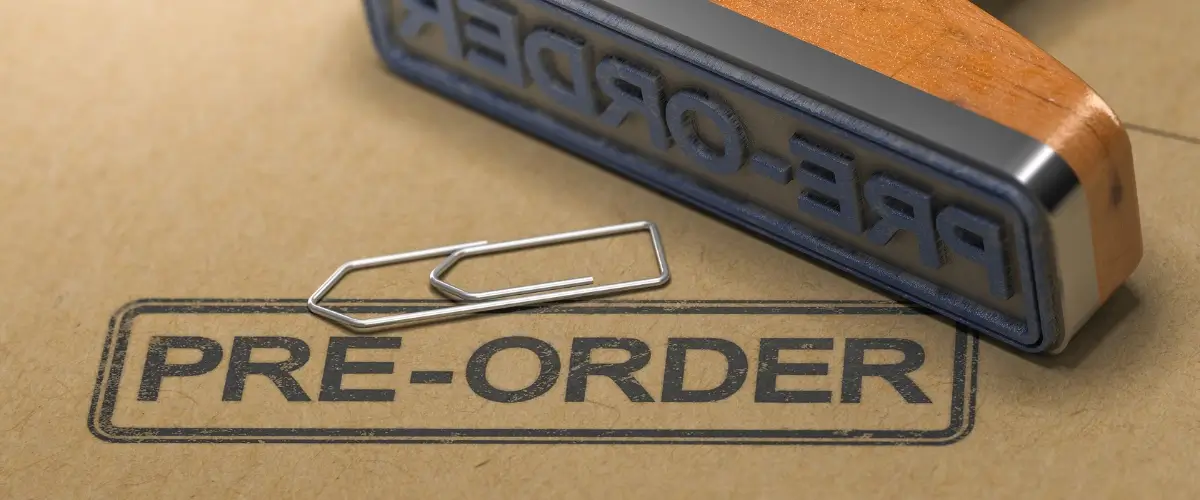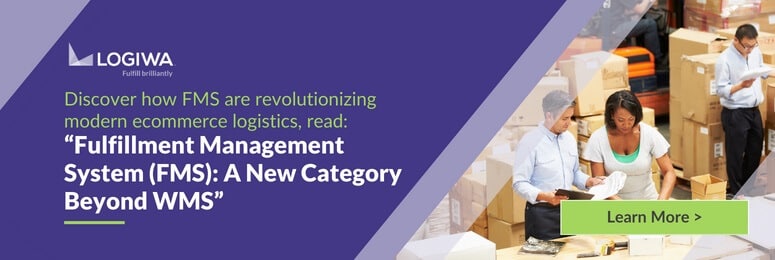How to Use Pre-Orders to Boost Your Ecommerce Sales
Popular among ecommerce retailers of all sizes and from countless industries, pre-orders are one of the most effective and versatile ways of selling products online today, therefore making the pre-order process an important part of ecommerce business for both small and big scale companies. Offering pre-order opportunities to clients has numerous benefits, including flexibility on product launches and a positive cash flow outcome. Here is everything you need to know about preorder, what pre-order means and how you can benefit from a well-thought-out pre-order strategy for your business. Here we will be sharing the pros and cons of running a pre-order campaign, the benefits of offering pre-orders, and the important key points to focus on while going through with this particular marketing strategy.
Contents
What is a Pre-order?
Before diving in the good stuff, it is essential to master the pre-order definition. A pre-order is an order placed for a product that hasn’t been released or manufactured yet. Offering a pre-order is when you list a product on your website that is not on sale yet but will be launched at a certain time in the foreseeable future. Allowing pre-orders on a particular product gives the customers the flexibility to pay the deposit or the full amount of the item while reserving it before it’s available for sale. This way, the customer ensures that the item will not be sold out when placed on the market, and they will receive it just as it comes in stock. A pre-order strategy is an effective way of creating a sense of exclusivity and excitement for a hyping product. When placing pre-orders for ecommerce sales, brands usually charge the customer either when the item is shipped or when the order is placed.
Why Use Pre-Orders?
Settling on the pre-order meaning, it is time to learn the importance of pre-order marketing and the benefits it offers both the brand and the customer. There are various reasons ecommerce companies opt for pre-orders for particular – and generally new – products. Gauge demand, limited financial risk, and generating hype and excitement are the main causes pre-order marketing is sought after in the online shopping world.
While collecting pre-orders can assist in generous forecast demand upon the said product, the numbers flowing in after the pre-order offer generally inform the retailer on how much of the product they will need to produce to supply for the demand. Depending on the manufacturing model, the gauge demand marketing strategy helps online businesses estimate the number of sales for the items and dodging the risk of holding on to unsold stock. Collecting pre-orders can also limit the online company’s financial risk with a new and yet untested product, be it a renewed version of an old model or a completely new item that the market has never seen before. This type of marketing can be especially useful for young online retailers looking for an alternative to borrowing money or struggling to seek potential investment, therefore easing their inventory production that has yet to prove its turnover. The excitement generated by offering pre-orders on a particular product is also another factor that cannot be ignored, creating an organic curiosity about the item that makes the customers wonder what the hype is actually about.
While marketing and selling physical goods involves undeniable capital and risk, offering pre-orders upfront can evolve into a practical approach when validating a certain product. Pre-orders allow companies to start taking orders and jazzing up the cash flow while the product is still in the making, therefore creating a delicate balance juggling time, investment, and demand. As opposed to the waterfall pattern, where one stage of the sales process has to follow the other strictly, the pre-order process breaks the mold with its innovative touch. Not to mention that a pre-order strategy is a suitable case when marketing MVPs (minimum viable products). Options such as “crowdfunding” or “pay later” can allow ecommerce stores to determine new variants or designs of the product ahead of time, releasing them of the obligation of producing unless the product proves itself with its sales.
When Not to Use Pre-Orders?
A beneficial marketing strategy until now, offering pre-orders may also have its downsides, where relying on them can do business more harm than good, especially in the long run. When offering pre-orders solely, the business’s fate relies on the manufacturer completely, increasing the risk of the item arriving late, have an obviously different quality than intended, or inevitably force you to change its price. In case any of these scenarios occur, the customer will most likely blame the brand itself, not the manufacturer, therefore causing a significant loss in trust, bad reviews, and chargeback fees. Of course, choosing a reputable and well-known manufacturer when dealing with a pre-order campaign can minimize the risk of any of these scenarios panning out.
Another thing to consider before opting for a pre-order strategy is the compatibility of your campaign with certain marketplaces. If you are selling via eBay, Amazon, or similar marketplace websites, running a pre-order campaign can at times become impossible to handle. With ecommerce platforms such as Amazon, the brand itself is not in control of how the orders are processed, making it a challenge to keep track of items being pre-ordered, shipped, or canceled. Besides, Amazon will automatically cancel the order if it hasn’t been shipped after 30 days of it being placed, disregarding the fact that the product is a part of a pre-order strategy.
You may interesting in: What is the cost of goods sold? How to calculate COGS? Everything you need to know about thecost of good sold is in this blog post.
How Does Pre-Order Work?
A pre-order strategy works when the brand allows customers to place an order for a product that is yet to be released, therefore giving the retailers the options of either charging the customer once the item is shipped or as soon as the order is placed. Pre-ordering is a marketing tool that many business owners use to introduce their product before it is launched. Testing the market before making a significant capital investment is another benefit that pre-ordering offers business in the long haul. So how does pre-order work in real life? Here are the main steps of setting up a pre-order strategy for a certain product.
Pre-order Basics 101: Marketing
Marketing is probably the most important part of conducting a pre-order strategy due to the fact that the most critical period of any product launch is surprisingly the few weeks leading up to the pre-order date. Simply put, what brands do before the launch of any product is more important than what they do after it. While any marketing campaign requires time and effort to research the target audience, this becomes even more important when creating a killer pre-order marketing plan. A pre-order strategy demands specific information on the potential customer base, including what kind of innovative product they would likely buy, what type of payment method they prefer, and what platforms or social media channels they choose to spend their time on. It is crucial for brands to conduct plenty of social media marketing in order to reach out to the potential audience and spread the word. The perceived urgency that pre-order marketing offers the customer is exactly the marketing tool you need to increase impulse buys to benefit your sales.
An Essential to Pre-Orders: Regular Communication
It is important to realize that the customer has paid or put a deposit on an item they have yet to receive. This puts them in a vulnerable place where every piece of communication done by the company’s part is a key brick when building the ladder of trust between the customer and the brand. Once the business starts receiving pre-orders, the brand needs to stay in ongoing communication with the customer base by sending continuous e-mails, keeping them updated on the manufacturing process, giving them details on the predicted shipment date, and any other changes that may arise during the process. The customers will definitely appreciate the constant communication that will build a transparent and loyal relationship between the two parties.
The Last Step: Order Fulfillment
If you decide to self-fulfill, order fulfillment can turn into a challenging and complicated process for your ecommerce preorders. Needless to say, it can be quite overwhelming when all of your pre-ordered inventory arrives at your home or office all at once. That is why it is important to partner with an experienced 3PL company to handle your pre-order process and ensure a successful pre-order story that will make ecommerce shipping a piece of cake. For more information on pre-order management and order fulfillment, click Order Fulfillment Software. With the help of a professional pre-order form customized for your brand’s and customers’ needs, you can receive a set of information such as the shipping date, estimated inventory arrival, and shipment tracking from the third-party logistics provider, as well as being able to pass this information along to your shoppers.
Using viral loops and incentives, paying to promote your pre-order campaign on social media, collaborating with influencers, and tapping into online communities are some of the other strategies for running a successful pre-order campaign for your business.
When meticulously conducted, offering a pre-order option is a great way to benefit your ecommerce business while generating excitement, raising funds, and gauging demand. While it is also important to consider the risks that may be involved and make sure to plan ahead, with the right manufacturer, successful communication, and a supporting 3PL, following through a pre-order strategy can turn into a profitable promotion for your ecommerce company.
Let’s convert to your warehouse to a B2C fulfillment engine. Schedule a Demo.
Related Terms
Warehouse management system requirements help identify opportunities support your company growth. Learn more with the Logiwa WMS Blog.
Ground shipping may not be as common as it once was, but it still serves as a primary means of moving product. Read about the risks and rewards in this article from Logiwa.
The total cost formula is revealed in detail in Logiwa blog. Learn more about how to calculate the total cost formula, and see the benefits.
Want to learn how to list products on Amazon? Click here and find out how to write an Amazon product listing that converts your page viewers into customers.
The final hurdle in successful order fulfillment is the domain of the Last Mile Carrier. This article from Logiwa will shed light on this vital role in our supply chain.
Learn more about the features, benefits and requirements of Walmart Fulfillment Services, and how it compares with Amazon’s FBA program.
Scale up B2C fulfillment with an integrated digital warehouse and fulfillment system.
Warehouse Management
Modern digital WMS powers a modern fulfillment experience






